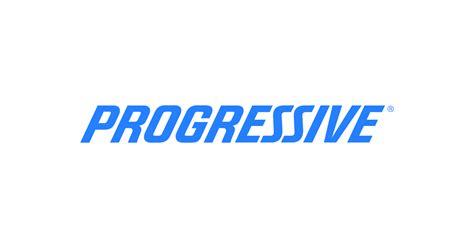How to smash a strength plateau & reignite muscle growth for peak performance?

Understanding the Strength Plateau
Every dedicated lifter eventually faces it: the dreaded strength plateau. You’ve been making consistent gains, but suddenly your lifts stall, reps become harder, and muscle growth seems to grind to a halt. This isn’t a sign of failure; it’s a natural adaptation by your body. Your muscles and nervous system have become accustomed to your current training stimulus, and what once was challenging is now merely routine. To reignite progress and continue on your path to peak performance, you need to introduce new stressors and intelligent strategies.
Breaking through a plateau requires a multi-faceted approach, tackling not just your workouts but also your recovery, nutrition, and mindset. Let’s delve into practical methods that will help you smash through these barriers and unlock new levels of strength and muscle mass.

Advanced Training Techniques to Break Through
The most direct way to overcome a strength plateau is to manipulate your training variables. Simply doing more of the same won’t work; you need to train smarter, not just harder.
Re-evaluating Progressive Overload
Progressive overload is the cornerstone of muscle growth, but it’s not just about adding more weight. When weight additions stall, consider these alternatives:
- Increased Reps: If you can’t add weight, try to add an extra rep or two to your sets while maintaining good form.
- More Sets: Gradually increase the number of working sets for a specific exercise.
- Reduced Rest Intervals: Shortening the time between sets can increase the intensity and metabolic stress.
- Time Under Tension (TUT): Focus on slower negatives (eccentric phase) or pauses at specific points in the lift to increase the muscle’s work duration.
- Improved Form: Sometimes, a plateau is due to inefficient form. Refine your technique to make the movement more effective and allow for greater loads.

Periodization and Deloads
Structured training cycles (periodization) prevent overtraining and ensure consistent progress. A common method is:
- Linear Periodization: Gradually increase weight while decreasing reps over several weeks, followed by a deload.
- Undulating Periodization: Vary rep ranges and intensity more frequently (e.g., heavy day, moderate day, light day within the same week).
Deload Weeks: Crucial for recovery and preventing burnout. Every 6-12 weeks, reduce your training volume (sets x reps) and/or intensity (weight) by 40-60% for a week. This allows your central nervous system, joints, and muscles to recover fully, often leading to a surge in strength upon returning to normal training.
Intensity Techniques
When strategically applied, these techniques can shock your muscles into new growth:
- Drop Sets: After reaching failure on a set, immediately drop the weight by 20-30% and continue for more reps until failure.
- Supersets/Giant Sets: Perform two or more exercises back-to-back with no rest in between.
- Rest-Pause: Perform a set to failure, rest for 10-20 seconds, then perform a few more reps with the same weight. Repeat once or twice.
- Partial Reps: Extend a set by performing reps through only a portion of the range of motion where you are strongest, once full range reps can no longer be achieved.

Optimize Recovery: The Unsung Hero
Training breaks down muscle; recovery builds it back stronger. Neglecting recovery is a primary reason for plateaus.
Prioritize Sleep
Aim for 7-9 hours of quality sleep per night. During deep sleep, your body releases growth hormone, which is vital for muscle repair and growth. Establish a consistent sleep schedule and create a conducive sleep environment.
Active Recovery & Stress Management
Light activities like walking, stretching, or foam rolling can aid blood flow and reduce muscle soreness. Additionally, chronic stress elevates cortisol, a hormone that can hinder muscle growth and promote fat storage. Incorporate stress-reduction techniques like meditation or hobbies into your routine.

Fueling for Growth: Nutrition & Supplementation
You can’t build a house without bricks, and you can’t build muscle without proper fuel.
Caloric Intake and Macronutrients
To gain muscle, you generally need to be in a slight caloric surplus. Ensure you’re consuming enough calories to support intense training and recovery. Focus on a balanced intake of macronutrients:
- Protein: Aim for 1.6-2.2 grams of protein per kilogram of body weight to support muscle repair and synthesis.
- Carbohydrates: Your primary energy source for workouts. Don’t fear them; they fuel performance and recovery.
- Fats: Essential for hormone production and overall health. Focus on healthy sources.
Hydration and Micronutrients
Drink plenty of water throughout the day. Dehydration can significantly impair performance and recovery. Ensure your diet is rich in fruits, vegetables, and whole grains to provide essential vitamins and minerals.
Strategic Supplementation
While not a substitute for whole foods, certain supplements can be beneficial:
- Creatine Monohydrate: Enhances strength, power, and muscle volume.
- Whey Protein: Convenient way to meet daily protein targets, especially post-workout.
- BCAAs/EAAs: Can help with muscle protein synthesis, particularly if protein intake is insufficient.

Mindset and Consistency
Breaking a plateau is as much a mental game as it is physical.
- Track Your Progress: Keep a detailed training log. Seeing your progress (even small increments) and knowing what you’ve tried can be highly motivating and informative.
- Set New Goals: Once you break through one plateau, immediately set a new, challenging, yet achievable goal.
- Patience and Persistence: Plateaus are temporary. Stay consistent with your revised plan, trust the process, and you will see results.
Conclusion
A strength plateau is not the end of your progress; it’s an opportunity to learn, adapt, and grow. By strategically implementing advanced training techniques, prioritizing recovery, optimizing your nutrition, and maintaining a positive mindset, you can effectively smash through any barrier. Embrace the challenge, stay consistent, and watch as you reignite muscle growth and achieve peak performance, pushing beyond what you thought was possible.








